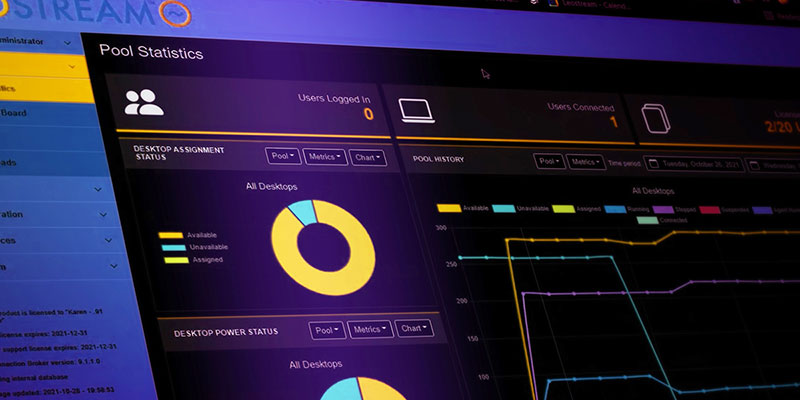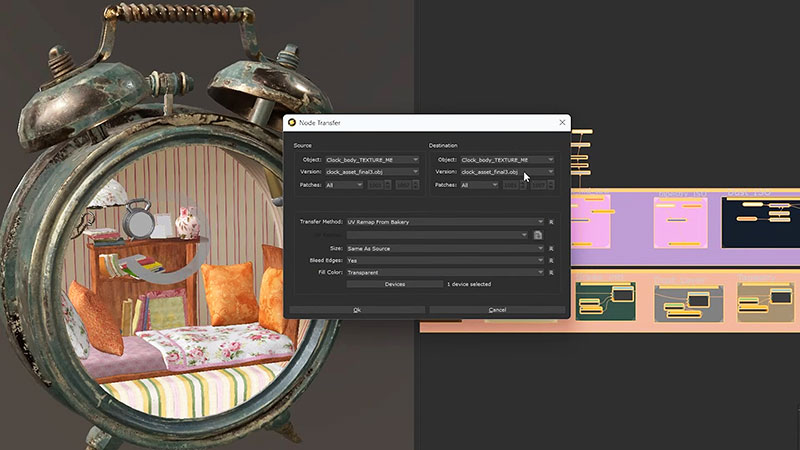Remote access developer Leostream and 10ZiG Technology, thin/zero client specialist for cloud and virtual desktops, have developed a joint system for secure, unified VDI environments.

Leostream Remote Desktop Access Platform
Remote desktop access developer Leostream and 10ZiG Technology, a specialist in thin/zero client hardware and software for cloud workspaces and virtual desktops, have developed a joint system for secure, unified VDI (Virtual Desktop Infrastructure) environments.
The combination of Leostream and 10ZiG hardware/software is built to give end users access to remote desktops regardless of whether the workforce is situated at home, in an office or in a mixed environment, or of their geographical location.
Remote Desktops with Linux Thin Client OS
Leostream’s own Remote Desktop Access Platform is built to allow end users to connect to any infrastructure, anywhere, anytime and from any device, quickly and securely with granular access controls to manage and authenticate end-user connections.
10ZiG develops secure, managed endpoint hardware with 10ZiG Linux and Windows 11 IoT LTSC (long term support channel) on traditional form-factor laptop or all-in-one thin clients or zero clients. Its RepurpOS, a secure Linux thin client operating system, uses existing PC hardware as an endpoint optimised for VDI, DaaS, and cloud environments. Organizations can extend the use of their hardware investments, and deliver the same UX as purpose-built thin clients – even on outdated PCs.
Because Leostream and 10ZiG are platform- and application-agnostic, organisations can custom-build VDI and cloud workspaces for the specific needs of their end users using their preferred tools and applications, without locking them in to their initial set-up.

10ZiG RepurpOS uses existing PC hardware as an endpoint optimised for VDI.
Combined, 10ZiG and Leostream centralise management for the entire on-prem, edge and cloud desktop environment through a single-pane-of-glass administrator portal. 10ZiG Manager is thin/zero client endpoint management software that controls the virtual desktop environment and is free to use. Leostream manages user-to-resource assignments and connections using the display protocol – for instance PcoIP, NICE DCV, NoMachine or others – that works best for the end user's tasks and level of availability.
Rules-based configuration and automated deployment simplify adding new desktops and users, scheduling tasks and assigning role-based access. Audit-level logging is used to track access and usage.
Low-Cost Alternative to Traditional VDI
"The end-user computing landscape has changed dramatically over the past 12 to 18 months, and organizations of all sizes are looking for new ways to deliver desktops and applications at a lower cost, without compromising on performance, security, reliability and ease of management," said Tom Dodds, manager of Global Strategic Alliances for 10ZiG Technology. "This joint solution meets these demands, with the advantage that all aspects of it are smoothly connected for the end user."
"Using Leostream and 10ZiG to create cloud, virtual and remote workspaces for users is a way for customers and IT service providers to design a purpose-built, cost-effective environment, and evolve as products, approaches and requirements change," said Cory D'Attoma, channel and alliances manager at Leostream. "Those looking for a flexible, low-cost alternative to traditional VDI stacks, with experiences and performance appropriate to their end users’ level of productivity, will find advantages in this option."
The Leostream Remote Desktop Access Platform itself, for hosted desktops and workstations, is a comprehensive approach to remote access that maintains productivity, controls costs and manages security with strict authentication and authorization built on zero-trust concepts. Its connection management system replaces corporate VPNs with an efficient gateway that gives users access to only the specific resources they have permission to use, automatically, regardless of their location or device. leostream.com




















